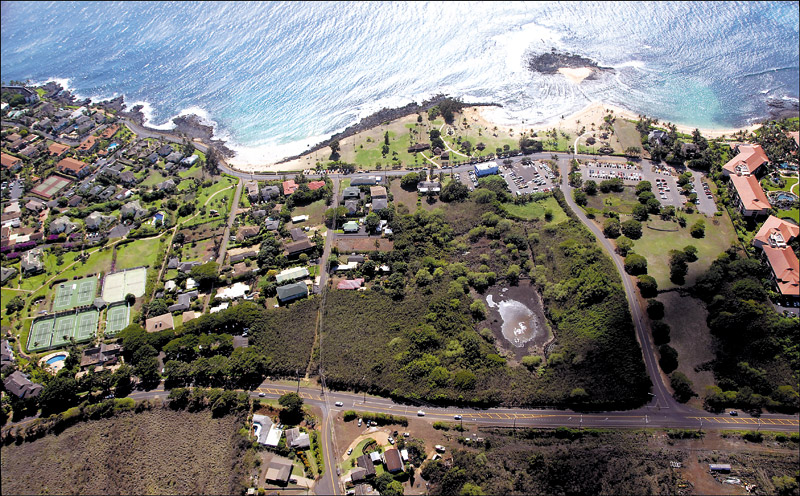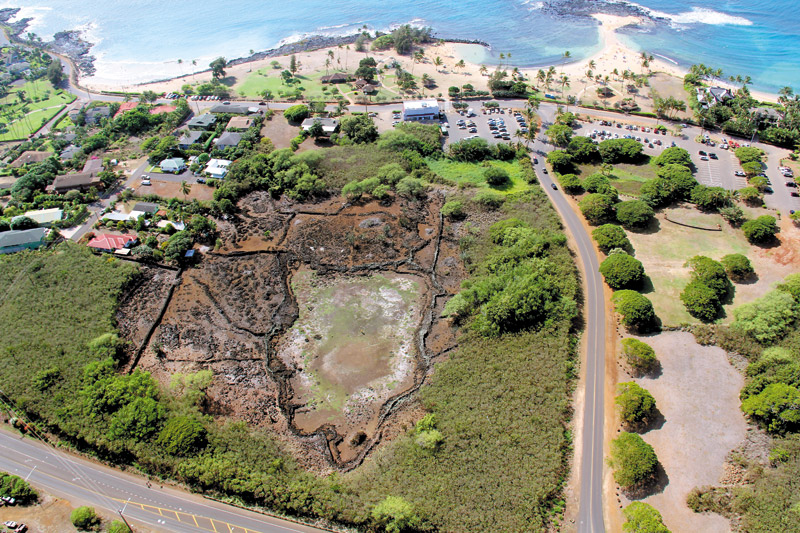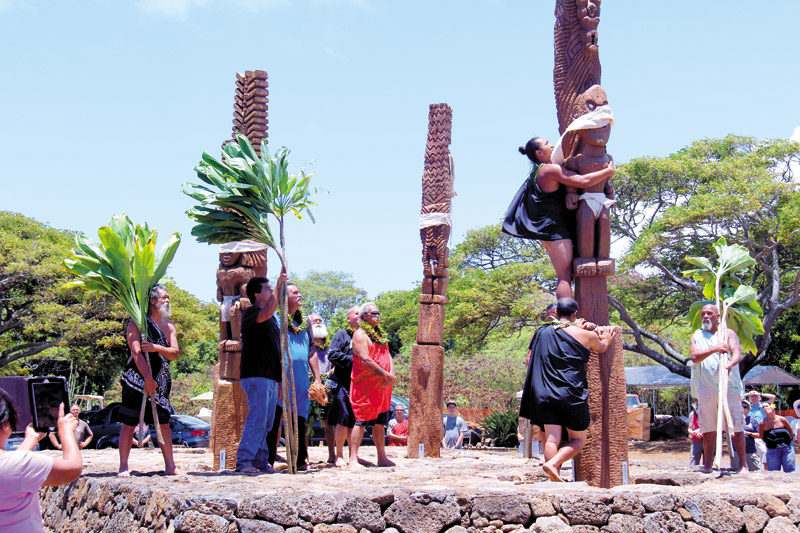Restoring Kaneiolouma
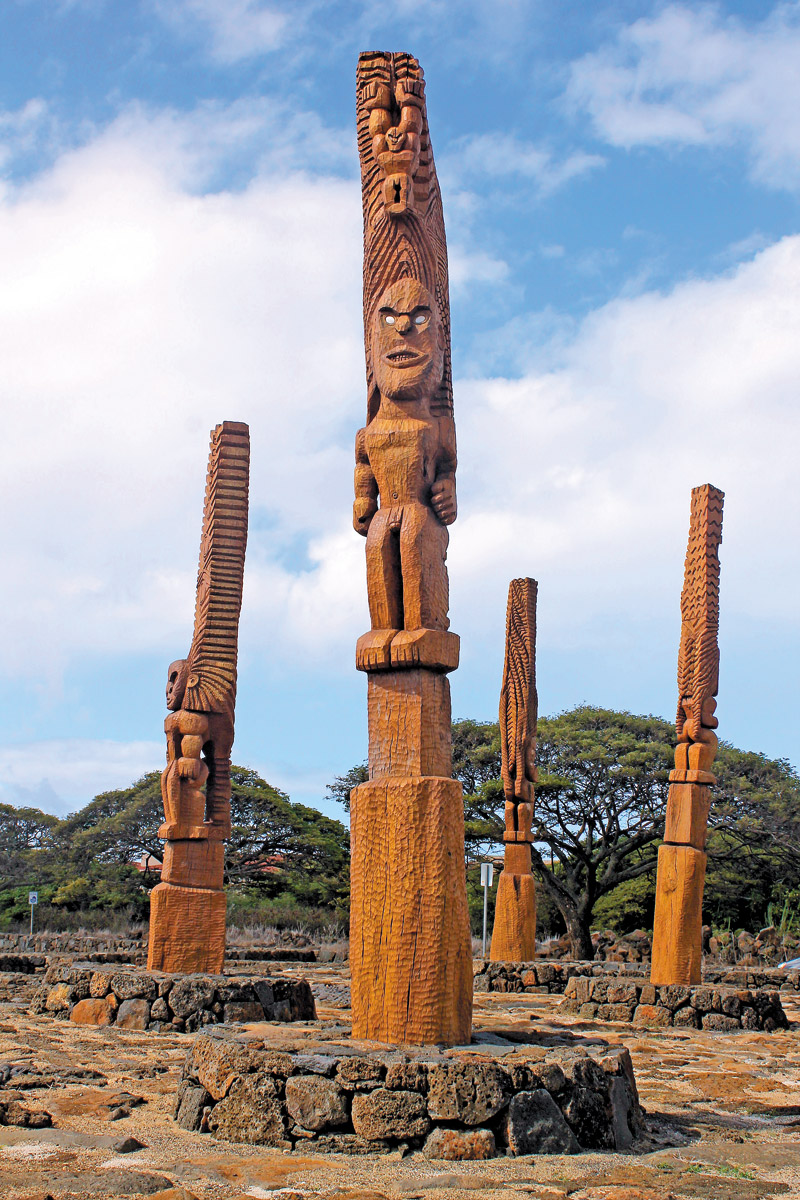
Four kii, representing Hawaiian gods Kane, Ku, Lono and Kanaloa, watch over the site
COCO ZICKOS PHOTO
Ke Kahua O Kaneiolouma once was hidden behind a wall of invasive plants. Passersby hardly gave the plot of land in Poipu a second glance. The hard-working volunteers of Hui Malama O Kaneiolouma, however, have changed that. Now, the 13-acre parcel is clear of weeds and reveals part of an ancient Hawaiian village that’s hard to miss.
“The general public was never taught what was hidden behind the bushes,” says Rupert Rowe, who is one of whom he calls the “we” who refurbished the historic site.
Now it’s nearly impossible to drive down the road to Poipu Beach without at least noticing the kii representing the four corners of Honua, the pillars in ancient Hawaiian astrology, standing guard over the complex. What has made this site even more attractive to curious onlookers since October, however, is the new interpretive signage. Linked together by a recently constructed walkway, the signs educate people not only about the native culture and language, but also about the historic site that lies before them.
“You see the joy of the people who read the signs,” says Rowe. “The knowledge they’re receiving is very educational and very explosive.”
The first day the signs, which are presented in English and Hawaiian, were unveiled, Rowe says he watched 200 people visit the site from 9 a.m. to 5 p.m.
“This is an example of an ancient Hawaiian village fully intact. You usually don’t find such a thing,” he says.
It was Hui Malama O Kaneiolouma’s objective to bridge Hawaii’s past and future to give people a living example of what life was like prior to colonization.
The historic landmark, still considered sacred to the culture, once hosted a thriving community. People not only lived there, but also they assembled on the grounds for Makahiki sporting events. It’s also the location of Waiohai spring, as well as the former site of fish ponds, taro fields and above-ground irrigation channels. Additionally, the area contains ancient religious structures, including shrines and altars, all dating back to the mid-1400s. While the original village stretched to around 26 acres, development has pushed it back to what is visible today.
The land that remains currently is protected and maintained by Hui Malama O Kaneiolouma, which formed a partnership with the county to have jurisdiction of the property in 2010.
“We’re a group that just came out of nowhere and just went full on,” says Rowe.
Hui Malama O Kaneiolouma was founded in 2009, but efforts have been underway to preserve the area since the 1990s. Nonetheless, it was as early as the 1950s when Henry Kekahuna predicted the changes that were occurring within the Hawaiian culture and sought to preserve sites like this. Several decades later, Billy Kaohelauli‘i took on the South Shore project and asked Rowe to partner with him.
“All we had to do was follow his (Kekahuna’s) vision and the mission he had to preserve the past. As a kanaka maoli myself, I understood the meaning of the legacy in our culture,” says Rowe.
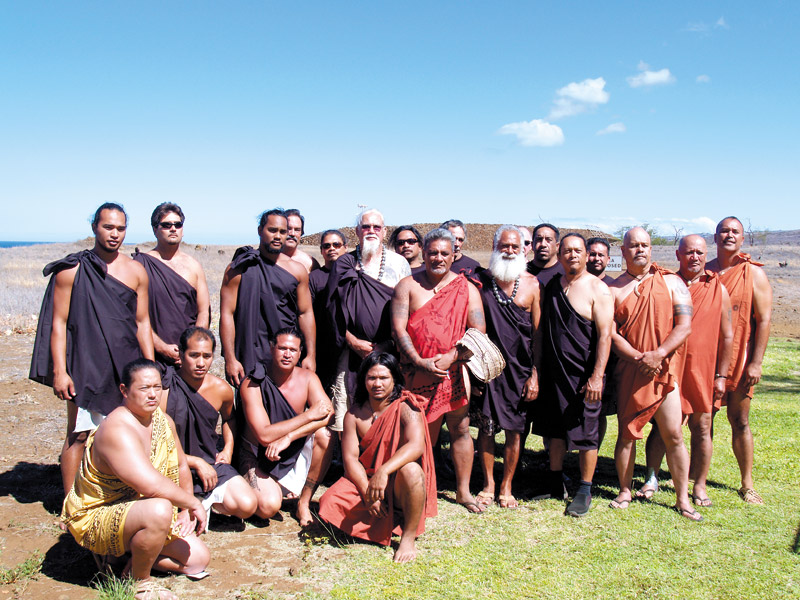
Hui Malama O Kaneiolouma attending a ceremony at Puukohola Heiau National Historic Site on Hawaii island
While efforts might have begun with just a few, the project has been the work of a number of dedicated people. Students, as well as volunteers from around the community, have helped restore the site, especially since 2010, when restoration labor began in earnest.
“To work here, you must be ‘we.’ There’s no ‘I’ here,” says Rowe. “It’s based on the group and not someone’s mission to gain glory and fame. Everybody had a purpose.”
Though a group of about 25 initially started the hui and continue to help at least once a month, many others since have joined forces.
“Anytime you give to the land, the land will give back to you, so we gave to the land and this is what you see,” says Rowe. “We gave it from our heart.”
Grants and funding have made each step of the project possible, and the next step is to continue internal wall reconstruction, rebuild traditional housing, restore a fishpond and taro patch,
and create a traffic plan. The final phase includes a visitors’ center, additional pathways and lookouts, as well as various cultural activities. The idea is to create a replica of what once was a prosperous community.
Rowe says he is happy with the project’s progress and hopes it continues. “When you come to a certain age at any life, you look back and ask if this is the legacy you’d like to lay down when you leave.”
To make a donation to the project or for more information, visit kaneiolouma.org.
cocomidweek@gmail.com


